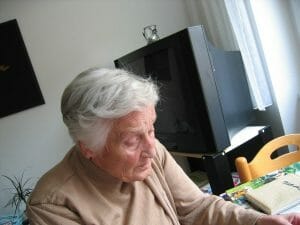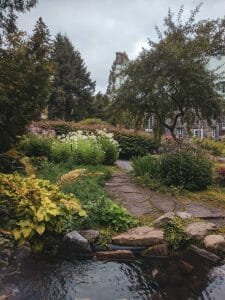Boarding homes for seniors.“Poor homes” or “poor farms”. In the early 1900s, these are where elderly people went to live when their families weren’t able to care for them. Initially, the county an elderly person lived in shouldered the responsibility of caring for the aging population. Medicare/Medicaid took that over when it was formed in the mid 1950s.
 As I write about this concept of rethinking retirement homes, I’m specifically focused on independent living situations with various services built into the “rent”, like a free-standing dorm or even a campus of apartments for the aging, meals, exercise programs, educational opportunities, and social events. I’m not thinking of anything as large as Sun City-style communities. I’m considering more intimate establishments for myself.
As I write about this concept of rethinking retirement homes, I’m specifically focused on independent living situations with various services built into the “rent”, like a free-standing dorm or even a campus of apartments for the aging, meals, exercise programs, educational opportunities, and social events. I’m not thinking of anything as large as Sun City-style communities. I’m considering more intimate establishments for myself.
I was intrigued with the communities both my parents and in-laws chose. I loved the idea of having someone do all my cooking and cleaning, leaving me to work, learn, and play all day. Through time, though, I realized that I wouldn’t have control of the type or quality of food I wanted, or necessarily even what time I ate. Hm, did I really want to give up that freedom?
I started thinking there could be a different way. That would be, for me, a better way.
Then COVID came. Freedoms of residents were cut drastically. Lockdown. No eating in the dining room – food was brought to your room. No going outside or you’d be quarantined. No outsiders — even family — could come in. Until we better understood this virus, that seemed like prudent precautions. But, were they?
Why weren’t masks required, as shirt and shoes are, and physical distancing established so that people could interact — and assist that kind of interaction? Why weren’t people encouraged to walk around the complex for exercise, sunshine, and fresh air? Why weren’t there more Zoom events for residents in more communities?
And after we better understood the virus, and after we had vaccines, why were the original rules kept in place? The isolation that these residents were subjected to reduced cognitive function, social skills, and even physical abilities.
There has to be a better way.
A Much Better Way
That’s where rethinking retirement homes comes in. I think small communities could be designed that would support a wide range of lives and needs. Integrate older people with younger people. Integrate the more wealthy with the less wealthy. Integrate people of different races or creeds with each other. Intermingling the rich diversity of what humanity has to offer makes for a richer, healthier life. That sounds like an interesting start to a retirement home alternative.
Let’s imagine a community of 25-50 residences gathered around a central green courtyard. Think multi-generational, multi-income, and multi-cultural. The residences range from single-family homes to multiplexes, and from tiny homes to more spacious homes. These homes are environmentally friendly in that the appliances are water and energy- efficient and they are well insulated.
The courtyard is a place for congregating to garden, relax, play and exercise. Let’s also imagine a “great house” where the community could party and celebrate, individuals could entertain others, and meetings and classes could be held there, too. In this community, interaction is encouraged. These interactions can vary from seniors reading to young kids or the young kids reading to the seniors, assistance can be offered to help each other, people can teach others their handcrafts and skills: needlework, woodworking, baking, handyman skills, languages, and even gardening.
None of this is forced (everyone lives independently) but the community heart is available to all. This is the kind of community where the residents have each other’s backs.
There are Many Better Ways
There’s another approach to retirement-aged living. I call it the Golden Girls-type home. A large home, of say four bedrooms, could house four single people. They share similar interests, and of course the daily chores of a home. These people can congregate, relax, play, and exercise together. They become family. They have each other’s backs. There obviously can be more good ideas, but a large institutionalized “God’s Waiting Room” to sit in until death, as one family friend referred to them, should be the last resort.
bedrooms, could house four single people. They share similar interests, and of course the daily chores of a home. These people can congregate, relax, play, and exercise together. They become family. They have each other’s backs. There obviously can be more good ideas, but a large institutionalized “God’s Waiting Room” to sit in until death, as one family friend referred to them, should be the last resort.
Now, let’s explore what happens when a pandemic comes. These residents decide together how they are going to keep themselves safe and healthy. They find a way to physically distance without socially distancing. They may decide masks and vaccines are important. They continue exercising and playing in the courtyard. They may adopt Zoom events, too. Their lives don’t change all that much, they are just more careful. They stay safe and healthy mentally, emotionally, physically, and spiritually.
Doesn’t that seem like a better way?

I like this idea. Remember the college student last fall who inadvertently rented in a retirement complex? However, I can see this being fearful for a lot of older folks, especially those who’ve never interacted outside of their socio-economic group.
That said, I’d like to see this idea of mixed mini-communities happen.
Interestingly, Marty, Denmark has had arrangements between seniors and college students for years where the college student gets rent reduction in exchange for helping with chores and such.
The nice thing about my idea s that nobody has to live in such a community. It’s for people who want to and can live independently. This concept is for adventurous, growth-minded people. There’s a place for everyone, and hopefully, everyone finds their kind of place.
Stay tuned. I’m hoping it happens too. I’ve got lots of fun ideas like this. 🙂
Six years ago I decided that living alone in a single family dwelling where the only close neighbors were young people, who I rarely saw more than once a week, needed to change.. They have busy lives and although we are good friends I couldn’t be sure anyone would know if I fell and was incapacitated for days. That did happen to an elderly relative of mine.
I chose to move to an independent living senior facility (I’m now 86). We normally have a lot of activities here, both exercise programs and entertainment. I visited several facilities in the Portland, OR area before deciding this one was the best fit. .
Marjorie, I agree that living alone isn’t ideal. We do as a society tend to live busy lives and it’s harder to make meaningful connections with neighbors. I’m glad you found an independent living senior facility you enjoy.
It’s my experience that in any community, it takes effort to make and keep connections with the people. At your senior community, there are staff who create the social connection opportunities for you. You and your neighbors in your previous community would have had to make that effort to get together. That’s not a fit for everyone.
My aunt had an arrangement with her neighbors that if they didn’t see her kitchen blind pulled up by 10am to check on her. That agreement saved her several times. I have another friend who has a band that measures jarring movement so if he falls it first asks him if he’s ok and if he doesn’t answer it calls someone.
I’d like to point out there’s a huge gap between living in a single-family home in a neighborhood filled with young people and an independent living senior facility. That gap is what I’m encouraging people to think about. We shouldn’t be alone. Connection is part of what keeps us young, healthy, and alive. I’m glad you found your answer. I hope this article will inspire people to think of lots of other possibilities for themselves.
Thanks for chiming in, Marjorie!